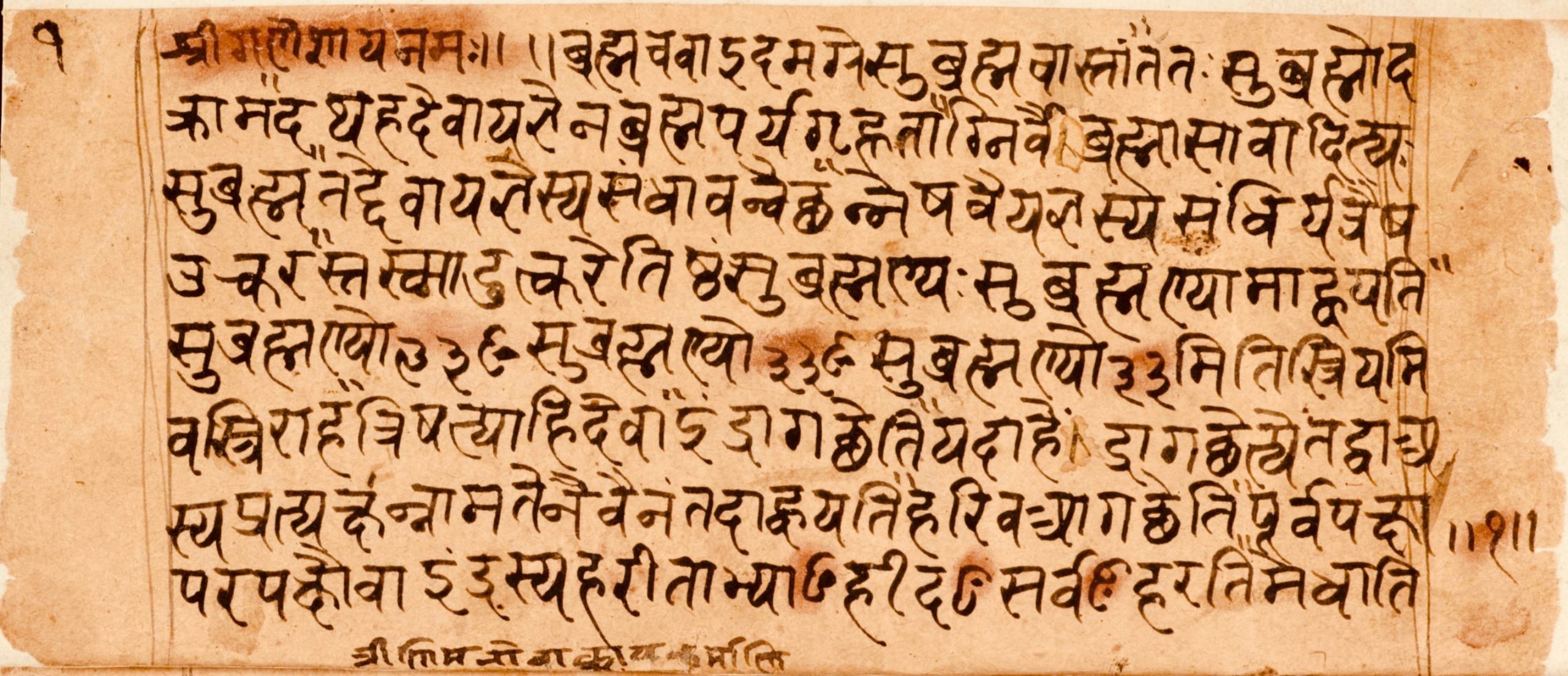Vedic Texts – Mantras and Brahmanas
Vedic texts are ancient scriptures of Hinduism. They were composed in Sanskrit and form the foundation of Hindu philosophy and rituals. The Vedas are divided into four main collections – Rigveda, Samaveda, Yajurveda, and Atharvaveda.
Structure of Vedic Texts
The Vedas consist of four primary parts:
- Samhitas: Collections of hymns and mantras.
- Brahmanas: Prose texts that explain rituals and ceremonies.
- Aranyakas: Texts that bridge Brahmanas and Upanishads.
- Upanishads: Philosophical texts exploring reality and the self.
Mantras
Definition
Mantras are sacred utterances or phrases believed to possess spiritual power.
Purpose
They are used in rituals, meditation, and spiritual practices. Mantras invoke divine energies and facilitate communication with the divine.
Types of Mantras
- Sanskrit Mantras: Composed in Sanskrit, often derived from Vedic texts.
- Bija Mantras: Seed mantras representing specific energies or deities.
Examples
- Gayatri Mantra: A revered mantra from the Rigveda dedicated to the Sun God, Savitr.
- Mahamrityunjaya Mantra: A mantra for healing and protection, dedicated to Lord Shiva.
Brahmanas
Definition
Brahmanas are prose texts that provide explanations and instructions for rituals in the Samhitas.
Purpose
They elaborate on the significance of rituals and the proper conduct of ceremonies. They also discuss the philosophical underpinnings of Vedic practices.
Key Features
- Ritual Instructions: Guidelines on performing various Vedic rituals.
- Mythological Narratives: Stories explaining the origins and meanings of rituals.
- Philosophical : Discussions on the nature of the universe and the self.
Notable Brahmanas
- Shatapatha Brahmana: Associated with the Yajurveda, it contains extensive discussions on rituals.
- Aitareya Brahmana: Linked to the Rigveda, it includes narratives about the universe’s creation.
Relationship Between Mantras and Brahmanas
Interdependence
Mantras are often embedded within the rituals described in the Brahmanas. This marks their practical application in Vedic rituals.
Philosophical Context
Brahmanas provide the philosophical context for the use of mantras. They explain the significance and intended outcomes of mantra recitation.
Historical Context
Composition Period
Vedic texts were composed over several centuries. The earliest texts date back to around 1500 BCE.
Cultural Influence
The Vedic texts have influenced Indian culture, philosophy, and religious practices throughout history. Their teachings have shaped various aspects of life in India.
Significance of Vedic Texts
Vedic texts are crucial for understanding Hindu traditions. They provide vital information about ancient Indian spirituality and ritual practices. Their philosophical discussions continue to be relevant .
Vedic Philosophy
The Upanishads, as the concluding part of the Vedas, delve into complex philosophical themes. They explore concepts such as Brahman (ultimate reality) and Atman (the self). This exploration laid the groundwork for various schools of Indian philosophy.
Ritual Practices
The rituals described in the Brahmanas are diverse. They include fire sacrifices (yajnas), offerings to deities, and rites of passage. Each ritual has specific mantras associated with it, enhancing its spiritual significance.
Transmission of Knowledge
Vedic knowledge was traditionally transmitted orally. This oral tradition ensured the preservation of texts for centuries. Students would learn from their gurus, emphasising memorisation and recitation.
Modern Relevance
Today, Vedic texts continue to be studied and revered. Scholars, practitioners, and spiritual seekers explore their teachings. They offer guidance on ethics, spirituality, and the nature of existence.
Vedic Texts and Yoga
The Vedic texts influence various forms of yoga. Mantras are integral to practices such as mantra yoga and bhakti yoga. They enhance meditation and devotion, encouraging a deeper connection to the divine.
Challenges in Interpretation
Interpreting Vedic texts can be complex. The language is archaic, and meanings can vary. Scholars often debate interpretations, leading to diverse understandings within Hinduism.
Conclusion of Vedic Studies
The study of Vedic texts is a vast field. It encompasses linguistics, philosophy, history, and spirituality. Each aspect contributes to a richer understanding of ancient Indian culture.
Influence on Other Traditions
Vedic texts have influenced various religious traditions beyond Hinduism. Elements of Vedic philosophy can be seen in Buddhism and Jainism. Their impact extends to contemporary spiritual movements.
Preservation Efforts
Efforts to preserve Vedic texts are ongoing. Institutions and scholars work to digitise and translate texts. This ensures accessibility for future generations and promotes broader understanding.
Conclusion of Vedic Influence
The influence of Vedic texts is deep. They shape not only religious practices but also cultural and philosophical thought in India and beyond. Their teachings remain a source of inspiration and guidance for many.


